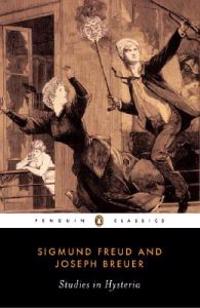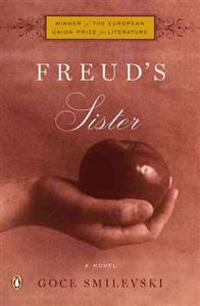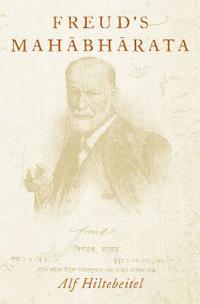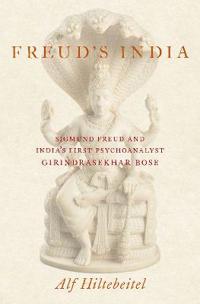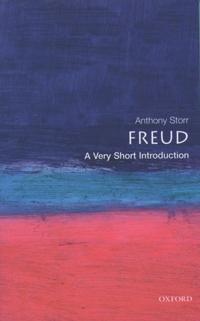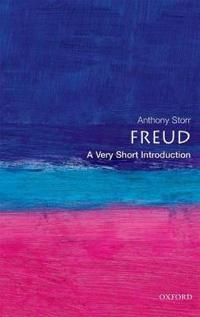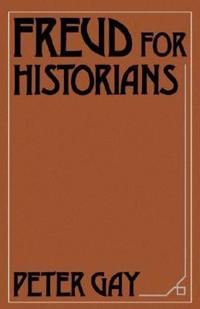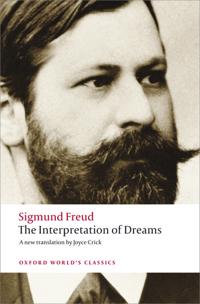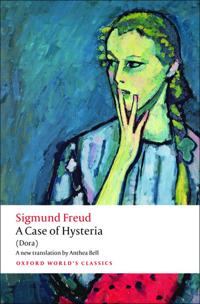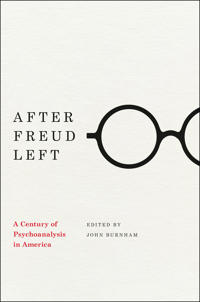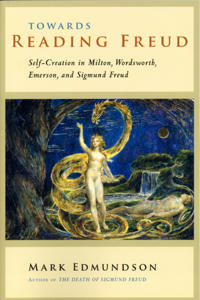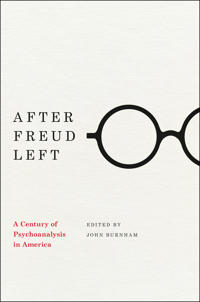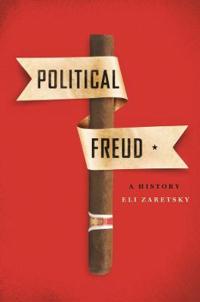Studies in Hysteria (Häftad)
avSigmund Freud, Joseph Breuer
ISBN: 9780142437490 - UTGIVEN: 200406Hysteria--the tormenting of the body by the troubled mind--is among the most pervasive of human disorders; yet, at the same time, it is the most elusive. Freud's recognition that hysteria stemmed from traumas in the patient's past transformed the way we think about sexuality. Studies in Hysteria is [...]
Freud's Sister (Häftad)
avGoce Smilevski
ISBN: 9780143121459 - UTGIVEN: 201208The award-winning international sensation that poses the question: Was Sigmund Freud responsible for the death of his sister in a Nazi concentration camp?
"The boy in her memories who strokes her with the apple, who whispers to her the fairy tale, who gives her the knife, is her brother Sigmund."[...]Dreaming for Freud (häftad)
ISBN: 9780143125198 - UTGIVEN: 2014-05An award-winning author reimagines one of Freud's most famous and controversial cases
Acclaimed for her spare prose and exceptional psychological insights in her novels "Becoming Jane Eyre" and "Love Child," Sheila Kohler's latest is inspired by Sigmund Freud's "Dora: An Analysis of a Case of Hy[...]Freud's Mahabharata
ISBN: 9780190878337 - UTGIVEN: 2018-09Though Freud never overtly refers to the Mahabharata, many of the Sanskrit epic's themes are illuminated by Freud's thought and, conversely, many incidents in the epic can be used to illustrate Freud's theories. In Freud's Mahabharata, the companion volume to Freud's India, Alf Hiltebeitel offers wh[...]
Freud's India
ISBN: 9780190878375 - UTGIVEN: 2018-09The sharp contrast between cultures with a monotheistic paternal deity and those with pluralistic maternal deities is a theme of abiding interest in religious studies. Attempts to understand the implications of these two vast organizing principles for religious life lead to an overwhelmingly diverse[...]
Freud: A Very Short Introduction
ISBN: 9780191606656 - UTGIVEN: 2001-02Sigmund Freud (1856-1939) revolutionized the way in which we think about ourselves. From its beginnings as a theory of neurosis, Freud developed psycho-analysis into a general psychology which became widely accepted as the predominant mode of discussing personality and interpersonal relationships. [...]
Freud (Häftad)
avAnthony Storr
ISBN: 9780192854551 - UTGIVEN: 200102Sigmund Freud (1856-1939) revolutionized the way in which we think about ourselves. From its beginnings as a theory of neurosis, Freud developed psycho-analysis into a general psychology which became widely accepted as the predominant mode of discussing personality and interpersonal relationships. A[...]
Shrinking History: On Freud and the Failure of Psychohistory (Inbunden)
avDavid E. Stannard
ISBN: 9780195027358 - UTGIVEN: 1980-09-25The Interpretation of Dreams (Häftad)
avSigmund Freud
ISBN: 9780199537587 - UTGIVEN: 200808This groundbreaking new translation of The Interpretation of Dreams is the first to be based on the original text published in November 1899. It restores Freud's original argument, unmodified by revisions he made following the book's critical reception which included, under the influence of his ass[...]
A Case of Hysteria (Häftad)
avSigmund Freud
ISBN: 9780199639861 - UTGIVEN: 2013-04'I very soon had an opportunity to interpret Dora's nervous coughing as the outcome of a fantasized sexual situation.' A Case of Hysteria, popularly known as the Dora Case, affords a rare insight into how Freud dealt with patients and interpreted what they told him. The 18-year-old 'Dora' was sent [...]
Lucian Freud (Inbunden)
ISBN: 9780224075152 - UTGIVEN: 2005-11Contains Freud's paintings, both large and small, together with a number of works on paper. His work shows no sign of diminishing energy. This book provides an analysis of Freud's work and a different voice among those who have made great claims for the significance of Freud's achievement.[...]
Oedipus and the Sphinx: The Threshold Myth from Sophocles Through Freud to Cocteau (Inbunden)
avAlmut-Barbara Renger
ISBN: 9780226048086 - UTGIVEN: 2013-10-18After Freud Left
ISBN: 9780226081373 - UTGIVEN: 2012-05From August 29 to September 21, 1909, Sigmund Freud visited the United States, where he gave five lectures at Clark University in Worcester, Massachusetts. This volume brings together a stunning gallery of leading historians of psychoanalysis and of American culture to consider the broad history of [...]
Towards Reading Freud (Häftad)
avMark Edmundson
ISBN: 9780226184616 - UTGIVEN: 200711When most critics were using Freudian theories to study literature, Mark Edmundson read Freud's writings as literature - alongside the works of poets grappling with the heady issues of desire, narcissism, and grief. "Towards Reading Freud" weighs the psychoanalyst's therapeutic directives against hi[...]
After Freud Left: A Century of Psychoanalysis in America (häftad)
ISBN: 9780226211862 - UTGIVEN: 2014-11From August 29 to September 21, 1909, Sigmund Freud visited the United States, where he gave five lectures at Clark University in Worcester, Massachusetts. This volume brings together a stunning gallery of leading historians of psychoanalysis and of American culture to consider the broad history of [...]
Scientific Credibility of Freud's Theories and Therapy, The (Övrig)
avSeymour Fisher, Roger P. Greenberg
ISBN: 9780231062152 - UTGIVEN: 1985-10-30Knowledge as Desire: An Essay on Freud and Piaget (Övrig)
avHans G. Furth
ISBN: 9780231064583 - UTGIVEN: 1987-05-26Freud's Free Clinics: Psychoanalysis and Social Justice, 1918-1938 (Inbunden)
avElizabeth Ann Danto
ISBN: 9780231131803 - UTGIVEN: 2005-04-05Freud's Free Clinics: Psychoanalysis and Social Justice, 1918-1938 (Övrig)
avElizabeth Ann Danto
ISBN: 9780231131810 - UTGIVEN: 2007-04-27Today many view Sigmund Freud as an elitist whose psychoanalytic treatment was reserved for the intellectually and financially advantaged. However, in this new work Elizabeth Ann Danto presents a strikingly different picture of Freud and the early psychoanalytic movement. Danto recovers the neglecte[...]
Secret of the Totem, The: Religion and Society from McLennan to Freud (Inbunden)
avRobert Alun Jones
ISBN: 9780231134385 - UTGIVEN: 2005-08-16Queer Beauty: Sexuality and Aesthetics from Winckelmann to Freud and Beyond (Övrig)
avWhitney Davis
ISBN: 9780231146906 - UTGIVEN: 2010-08-05The pioneering work of Johann Winckelmann (1717-1768) identified a homoerotic appreciation of male beauty in classical Greek sculpture, a fascination that had endured in Western art since the Greeks. Yet after Winckelmann, the value (even the possibility) of art's queer beauty was often denied. Seve[...]
Political Freud
ISBN: 9780231172448 - UTGIVEN: 2015-11In this masterful history, Eli Zaretsky reveals the power of Freudian thought to illuminate the great political conflicts of the twentieth century. Developing an original concept of "political Freudianism," he shows how twentieth-century radicals, activists, and intellectuals used psychoanalytic ide[...]
Political Freud (häftad)
ISBN: 9780231172455 - UTGIVEN: 2017-07In this masterful history, Eli Zaretsky reveals the power of Freudian thought to illuminate the great political conflicts of the twentieth century. Developing an original concept of "political Freudianism," he shows how twentieth-century radicals, activists, and intellectuals used psychoanalytic ide[...]

